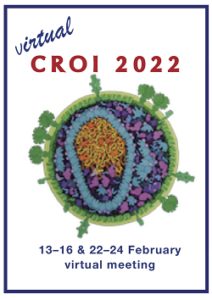CROI 2022: Other studies on anal cancer
1 March 2022. Related: Conference reports, Cancer and HIV, CROI 29 (Retrovirus) 2022.
 Kirk Taylor, HIV i-Base
Kirk Taylor, HIV i-Base
In addition to the ANCHOR study reported above [1], CROI 2022 included two other posters that are worth reporting.
Risk factors associated with anal cancer
The first was a retrospective chart review of young MSM (n=100) and transgender women (n=3) that attended a youth clinic in Atlanta, GA. [2].
HIV positive subjects were aged 19 (SD± 2) at presentation, 91% were Black.
Anal warts were reported by 83% and 65% had received surgical treatment; 12% of subjects had received full course of HPV vaccination.
High grade anal intraepithelial neoplasia (AIN) was detected in 63% of participants.
Adjusted odds ratios indicated that incomplete HPV vaccination (5.34; 90% CI: 1.30 to 21.93; p=0.05) and previous surgical treatment (2.59; 90% CI: 1.18 to 5.66; p=0.05) were associated with increased chance of anal cancer.
Although this study identifies potential risk factors for anal cancers, it is limited to a single youth clinic in Atlanta and the low number of trans women included (n=3) limit the conclusions that can be drawn for this population.
HPV risk correlates with anal cancer risk
A second larger study reported that screening for pre-cancerous anal dysplasia was conducted between 2014 to 2020 in 1397 HIV positive people aged under 35. [3]
Participants in this group were 93% male and 28% had received HPV vaccination prior to screening.
Prevalence of high grade anal HSIL was 44% across the cohort. Age at time of diagnosis did not correlate with risk of anal cancer.
HPV vaccination was associated with lower rates of HPV infection, suggesting a need to increase rates of vaccination in high-risk populations.
Taken together, these studies indicate the need to increase screening programmes for HSIL to prevent and treat anal cancers in high-risk individuals. Further data is required to stratify relative risk for different populations (e.g. trans women).
HPV vaccines may provide protection against HSIL and anal cancers in MSM and HIV positive populations.
References
- Talyor K. CROI 2022: ANCHOR study reduces anal cancer by 57% and supports screening for people living with HIV. HTB (February 2022).
https://i-base.info/htb/42226 - Loerinc et al. Factors associated with anal dysplasia among young MSM and TW with HIV in Atlanta. CROI 2022. Virtual 12-16 Feb 2022. Poster 562.
https://www.croiconference.org/abstract/factors-associated-with-anal-dysplasia-among-young-msm-and-tw-with-hiv-in-atlanta/ - Sigel et al. Results of anal dysplasia screening in people with HIV younger than 35. CROI 2022. Virtual 12-16 Feb 2022. Poster 561.
https://www.croiconference.org/abstract/prevalence-and-severity-of-hpv-associated-anal-disease-in-pwh-younger-than-35/
This report was first published on 17 February 2022.

